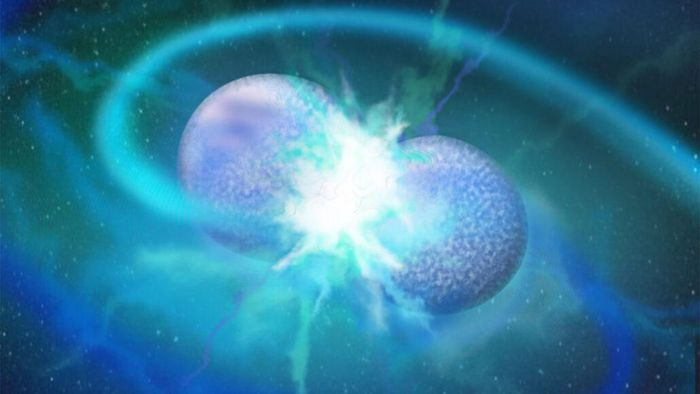Like the phoenix, some stars can burst into life and rise from the “dust” remnants of previously existing stars.
Researchers reported in the Monthly Notices of the Royal Astronomical Society Letters: “Two newly discovered fireballs burn hundreds of times brighter than the sun and are covered in carbon and oxygen.” This is considered a byproduct of the helium synthesis process, belonging to a new type of star.

A carbon and oxygen-rich star with a core burning helium can emerge from the merger of two dead stars known as white dwarfs (illustration).
Although these fiery spheres are not the first stellar objects found to be covered in carbon and oxygen, an analysis of the light emitted by the stars shows they are the first objects discovered to also have a helium-burning core.
Co-author of the study, Nicole Reindl – an astrophysicist from the University of Potsdam (Germany), stated: “This combination has never been seen before. It indicates that the star must have evolved differently.”
Stars can form from the merger of two white dwarfs, the remnants of stars that have exhausted their fuel, one of which is rich in helium, while the other contains significant amounts of carbon and oxygen. Ultimately, the helium-rich white dwarf consumed its partner, spewing carbon and oxygen across its surface, much like a messy child might have food smeared on their face.
Tiara Battich, an astrophysicist from the Max Planck Institute for Astrophysics in Garching, explained that such a merger would create a stellar object covered in carbon and oxygen with enough mass to reinstate nuclear fusion reactions in its core, along with her colleagues from Germany.
To test this hypothesis, Battich and her colleagues simulated the evolutionary process, death, and eventual merger of two stars. The research team found that merging a carbon and oxygen-rich white dwarf with a larger helium star could explain the surface composition of the two stars that Reindl and her colleagues observed.
Battich remarked: “But this is very rare.”
In most cases, the opposite would occur – carbon-oxygen white dwarfs would typically cover themselves with helium. This is because carbon-oxygen white dwarfs are often stars of greater mass. For the rarer case to occur, two stars with masses slightly greater than the sun must have formed at a moderate distance from each other. Furthermore, they would need to exchange material at just the right time before both exhaust their nuclear fuel to leave behind a helium-rich white dwarf with a greater mass than its carbon and oxygen partner.
Simon Blouin, an astrophysicist from the University of Victoria in Canada, who was not involved in this research, noted that the origin story proposed by Battich and her colleagues requires a very specific and unusual set of circumstances. “But ultimately, it makes sense.” He said: “Star mergers are complex and dynamic events that can occur in many ways (SN: 12/1/20). This is just another one.”

















































